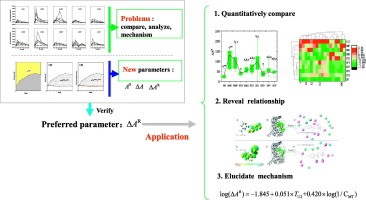当前位置:
X-MOL 学术
›
Sci. Total Environ.
›
论文详情
Our official English website, www.x-mol.net, welcomes your feedback! (Note: you will need to create a separate account there.)
New parameters for the quantitative assessment of the proliferation of antibiotic resistance genes dynamic in the environment and its application: A case of sulfonamides and sulfonamide resistance genes.
Science of the Total Environment ( IF 9.8 ) Pub Date : 2020-04-07 , DOI: 10.1016/j.scitotenv.2020.138516 Ligui Wu 1 , Xiaoyu Xiao 1 , Fen Chen 2 , Huan Zhang 1 , Liangliang Huang 3 , Lingling Rong 1 , Xiaoming Zou 2
Science of the Total Environment ( IF 9.8 ) Pub Date : 2020-04-07 , DOI: 10.1016/j.scitotenv.2020.138516 Ligui Wu 1 , Xiaoyu Xiao 1 , Fen Chen 2 , Huan Zhang 1 , Liangliang Huang 3 , Lingling Rong 1 , Xiaoming Zou 2
Affiliation

|
Antibiotic resistance genes (ARGs) have been widely detected around the world and are generally viewed as emerging pollutants with environmental persistence. The proliferation of ARGs can be easily promoted by antibiotics. However, the dynamics of ARGs in the environment are still unable to be quantified using a single parameter, which is vital to evaluating the ability of ARGs to spread by antibiotics and effectively controlling ARGs. A new parameter, termed the relative area ratio of sample to control (ΔAR), was developed based on the quantitative features determined by ARG-time curves in soils contaminated with sulfonamides (SAs) and verified by quantitative structure-activity relationships (QSARs) models. The results showed that ΔAR can not only be used to accurately quantify the characteristics of SAs resistance genes (Suls) over time but also be applied to reveal the relationships between the proliferation of Suls and important factors (i.e., concentrations and chemical structures). Moreover, the ΔAR-based QSARs model indicated that bioavailability and the frequency of conjugative transfer, rather than the ability of induced mutations in bacteria, tend to be key processes of the characteristics of the proliferation of Suls. Therefore, ΔAR is a useful parameter to perform environmental risk assessments of ARG proliferation in the environment.
中文翻译:

定量评估环境中动态产生的抗生素抗性基因增殖的新参数及其应用:以磺酰胺类和磺酰胺类抗性基因为例。
抗生素抗性基因(ARG)已在世界范围内被广泛检测到,通常被视为具有环境持久性的新兴污染物。抗生素很容易促进ARGs的增殖。但是,仍然无法使用单个参数来定量环境中ARG的动力学,这对于评估ARGs通过抗生素传播的能力和有效控制ARG至关重要。根据ARG时间曲线在被磺酰胺(SAs)污染的土壤中确定的定量特征,并通过定量构效关系(QSARs)模型进行验证,开发了一个新参数,称为样品与对照的相对面积比(ΔAR)。 。结果表明,ΔAR不仅可以用来随时间准确地量化SAs抗性基因(Suls)的特征,而且可以用于揭示Suls增殖与重要因素(即浓度和化学结构)之间的关系。此外,基于ΔAR的QSARs模型表明,生物利用度和共轭转移的频率,而不是细菌中诱发突变的能力,往往是Suls增殖特征的关键过程。因此,ΔAR是执行环境中ARG扩散的环境风险评估的有用参数。基于ΔAR的QSARs模型表明,生物利用度和共轭转移的频率,而不是细菌中诱导的突变的能力,往往是Suls增殖特征的关键过程。因此,ΔAR是执行环境中ARG扩散的环境风险评估的有用参数。基于ΔAR的QSARs模型表明,生物利用度和共轭转移的频率,而不是细菌中诱导的突变的能力,往往是Suls增殖特征的关键过程。因此,ΔAR是执行环境中ARG扩散的环境风险评估的有用参数。
更新日期:2020-04-08
中文翻译:

定量评估环境中动态产生的抗生素抗性基因增殖的新参数及其应用:以磺酰胺类和磺酰胺类抗性基因为例。
抗生素抗性基因(ARG)已在世界范围内被广泛检测到,通常被视为具有环境持久性的新兴污染物。抗生素很容易促进ARGs的增殖。但是,仍然无法使用单个参数来定量环境中ARG的动力学,这对于评估ARGs通过抗生素传播的能力和有效控制ARG至关重要。根据ARG时间曲线在被磺酰胺(SAs)污染的土壤中确定的定量特征,并通过定量构效关系(QSARs)模型进行验证,开发了一个新参数,称为样品与对照的相对面积比(ΔAR)。 。结果表明,ΔAR不仅可以用来随时间准确地量化SAs抗性基因(Suls)的特征,而且可以用于揭示Suls增殖与重要因素(即浓度和化学结构)之间的关系。此外,基于ΔAR的QSARs模型表明,生物利用度和共轭转移的频率,而不是细菌中诱发突变的能力,往往是Suls增殖特征的关键过程。因此,ΔAR是执行环境中ARG扩散的环境风险评估的有用参数。基于ΔAR的QSARs模型表明,生物利用度和共轭转移的频率,而不是细菌中诱导的突变的能力,往往是Suls增殖特征的关键过程。因此,ΔAR是执行环境中ARG扩散的环境风险评估的有用参数。基于ΔAR的QSARs模型表明,生物利用度和共轭转移的频率,而不是细菌中诱导的突变的能力,往往是Suls增殖特征的关键过程。因此,ΔAR是执行环境中ARG扩散的环境风险评估的有用参数。



























 京公网安备 11010802027423号
京公网安备 11010802027423号